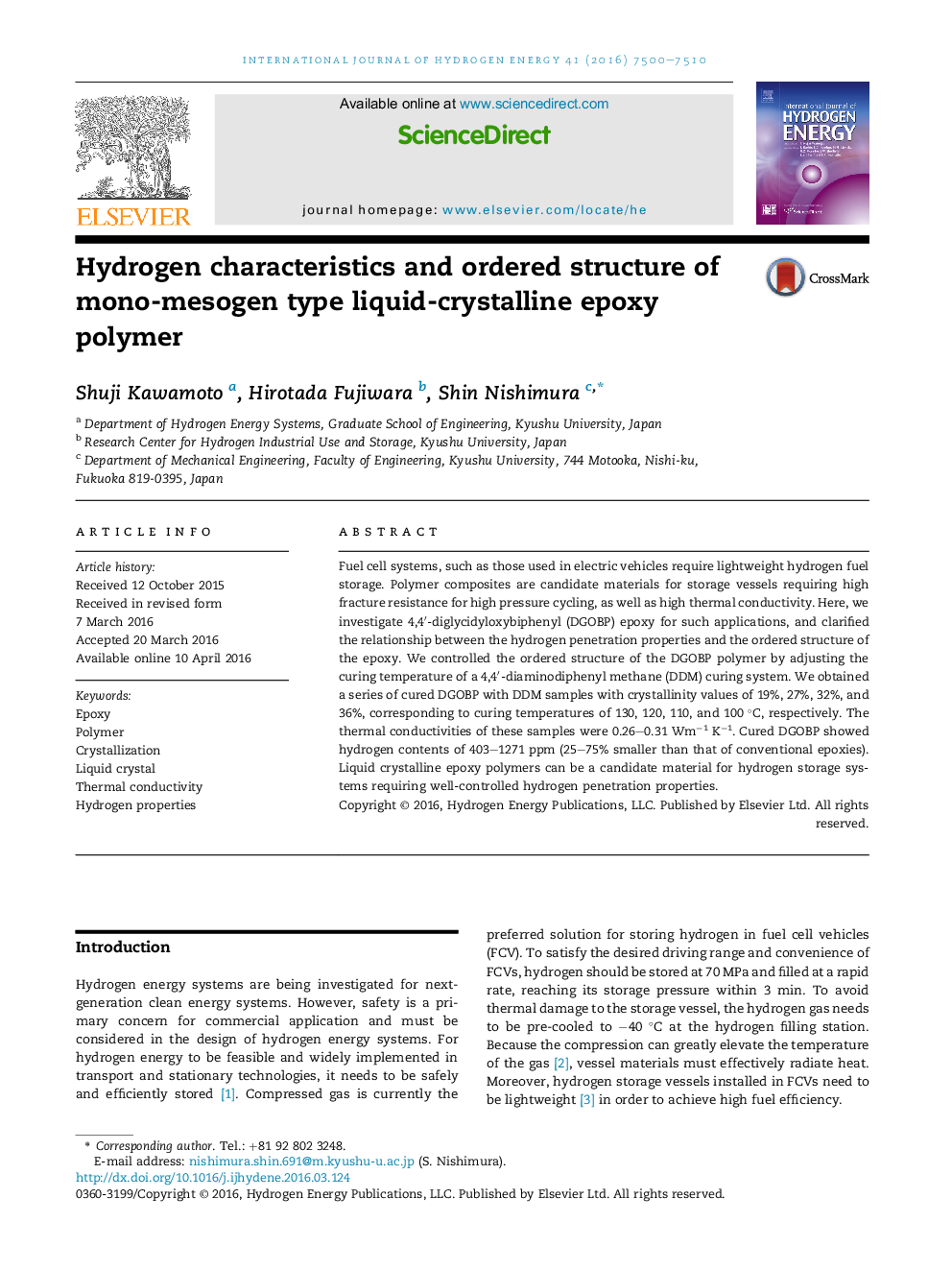| Article ID | Journal | Published Year | Pages | File Type |
|---|---|---|---|---|
| 1268703 | International Journal of Hydrogen Energy | 2016 | 11 Pages |
•Liquid crystal epoxy polymer evaluated as polymeric material for hydrogen equipment.•The ordered structure was controlled by adjusting the curing temperature.•Hydrogen diffusion was strongly correlated with the crystallinity of the cured epoxy.
Fuel cell systems, such as those used in electric vehicles require lightweight hydrogen fuel storage. Polymer composites are candidate materials for storage vessels requiring high fracture resistance for high pressure cycling, as well as high thermal conductivity. Here, we investigate 4,4′-diglycidyloxybiphenyl (DGOBP) epoxy for such applications, and clarified the relationship between the hydrogen penetration properties and the ordered structure of the epoxy. We controlled the ordered structure of the DGOBP polymer by adjusting the curing temperature of a 4,4′-diaminodiphenyl methane (DDM) curing system. We obtained a series of cured DGOBP with DDM samples with crystallinity values of 19%, 27%, 32%, and 36%, corresponding to curing temperatures of 130, 120, 110, and 100 °C, respectively. The thermal conductivities of these samples were 0.26–0.31 Wm−1 K−1. Cured DGOBP showed hydrogen contents of 403–1271 ppm (25–75% smaller than that of conventional epoxies). Liquid crystalline epoxy polymers can be a candidate material for hydrogen storage systems requiring well-controlled hydrogen penetration properties.
Graphical abstractFigure optionsDownload full-size imageDownload as PowerPoint slide
